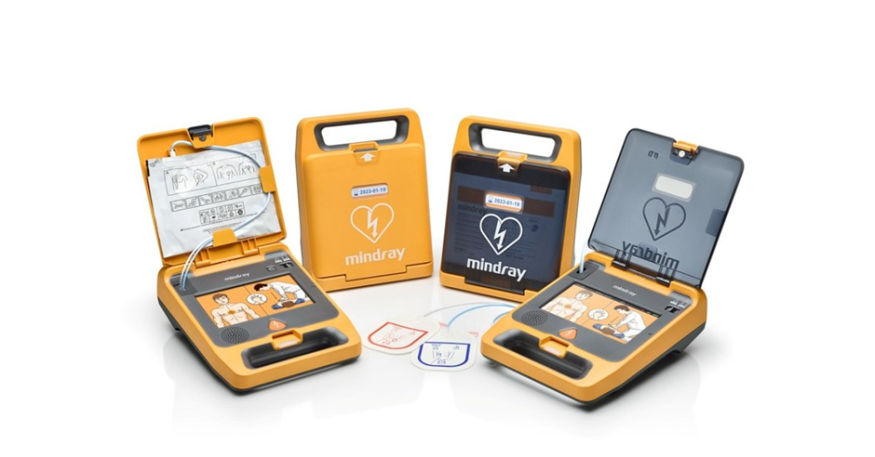
When it comes to a person experiencing a sudden cardiac arrest (SCA), every second becomes crucial. Temporary utilization of automated external defibrillator (AED) can, in most cases, determine the victim's survival or death. For this reason, treatment must not be delayed due to having problems to find the AED device in time.
Here we will introduce you to some general suggestions on how to properly store AED Equipment.
Storage Temperature
Storing the AED at exceedingly high or low temperatures can result in considerably shortening the batteries and pads lifetime, causing the defibrillator to malfunction when delivering the electric shock in a life-threatening situation.
As mentioned, batteries affected by the heat can prematurely discharge, influencing the whole device's performance.
Similarly, AED pads applied on the patient's bare chest to perform defibrillation during SCA, can also be influenced by extreme heat. The water-based gel may evaporate over time, causing the electrodes to be unable to stick to the affected person's chest correctly to transfer the electrical shock to his/her heart.
If the AED is stored in the outdoors should always be kept in a shaded, cool environment. As for indoor installment, you should refrain from placing it next to heat sources such as heaters.
As for the optimal storage temperature, it can vary based on different devices and manufacturers. Typically, the suggested temperature ranges from 32° to 122°F (0° to 50°C) [1].
Keep in mind that exceeding manufacturer specifications can be dangerous, please refer to the product technical data sheet and instruction manuals when storing and using it.
Location
Nowadays, in many countries by legislation, AEDs are required to be installed in public spaces and facilities. Places of business, government buildings, schools, hospitals, airports, shopping malls, communities should always provide the general public with access to AEDs.
Many non-profit organizations such as the Red Cross are investing in publicity and organizing Basic Life Support (BLS) training programs, teaching CPR and defibrillator utilization with the purpose of making people more aware of AEDs' presence and utility.
In the first place, AEDs must not be stored in hidden locations such as desk drawers and closets, as it would most likely delay their employment. The ideal position should be near the main entrance or in the area where most people pass through.
In the second place, it is recommended to install them in visible and easily accessible spots in a public space. This can be achieved through the deployment of the AED wall bracket. Wall units are designed to make AED easy to be identified, as well as providing protection from dust or water, and making it fall-proof.
As a matter of fact, mounted on the wall at roughly 5 feet from the ground, AEDs are safely stored as to be simply reached by an adult and at the same time out of children's hands.
Conclusion
With its mission to provide better healthcare for all and 29 years of history and international certifications, Mindray is one of the leading and most accredited companies in the medical device industry. In the company portfolio, you can find a wide portfolio of medical equipment, including AED devices and its accessories. Each of the products is designed to bring innovative and reliable solutions for the future of medical care.
References:
[1] High Temperatures Putting Your AED At Risk. (2015). Available at:
https://www.aed.com/blog/high-temperatures-putting-your-aed-at-risk/ (Accessed: 7 April 2020)
© 2025 NatureWorldNews.com All rights reserved. Do not reproduce without permission.





